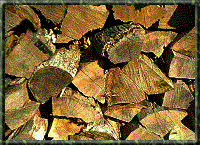Malheur National Forest
| Grant County Chamber of Commerce | |
| Harney County Chamber of Commerce | |
| Evaluate Our Service We welcome your comments on our service and your suggestions for improvement |
Malheur National Forest (541) 575-3000 |
|
|
|
Personal Use Firewood A
permit and load tickets are required. A firewood
cutting permit and load tickets are required to cut, gather, and
transport firewood on the Malheur National Forest. Firewood
permits will be valid from time of purchase until the end of the
calendar year in which they were purchased. A
permit and load tickets are required. A firewood
cutting permit and load tickets are required to cut, gather, and
transport firewood on the Malheur National Forest. Firewood
permits will be valid from time of purchase until the end of the
calendar year in which they were purchased.
Information needed to purchase permit: name, physical address, driver's license number, vehicle information (year, make, model, color, and license plate number of vehicle being used to haul firewood), in addition to number of cords to be purchased. Where to get permits: Firewood cutting permits
are available at the Malheur National Forest Headquarters office
and Ranger District offices. Where to go: Not all lands on the National Forest are open to firewood cutting. Please consult the firewood map to be sure you are in an area where cutting is permitted. Remember that not all land within the Forest is publicly owned. It is your responsibility to be certain you are not trespassing on private land. The permit is for the Malheur National Forest lands only, and not for State, or private lands. Areas excluded from firewood cutting. Please see firewood cutting area map for additional restricted sites.
Stump diameter, height, and species limitations: Down trees without green needles may be cut unless marked with paint (orange, yellow, blue, red, green, or white) or “Wildlife Tree” signs, and that are located in areas where cutting is allowed. Standing dead trees, may be cut within 150 feet of an open road, regardless of size or species, except Western Larch may not be cut from November 1 thru April 30, provided the road is outside:
Standing dead trees, 20 inches or smaller at stump height, may be fell outside the 150 foot road zone unless restricted for resource protection as shown on the Personal Use Firewood Map. Felling of ponderosa pine outside the 150-foot open roadside zone is prohibited on the Prairie City Ranger District.
Use of permit by another party: In very limited circumstances (when a person is not physically able to collect the firewood him or herself), a third party permission attachment to the personal use firewood permit may be approved. It is necessary to have approval and the signed form before collecting firewood. Contact your nearest Ranger District office for details. |
USDA Forest Service - Malheur National Forest
Last Modified: Tuesday, 13 May 2008 at 10:44:41 EDT
